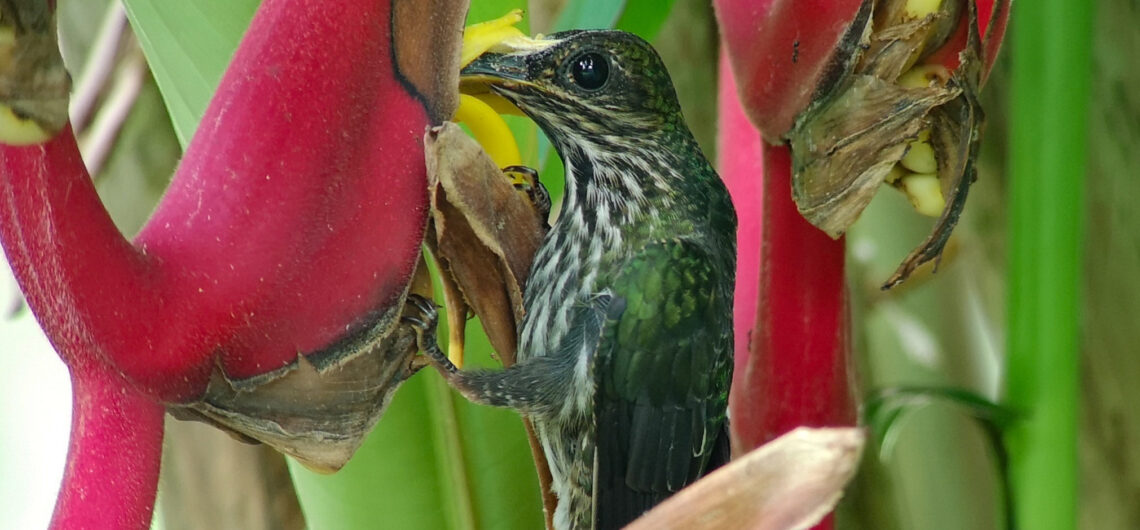White-tipped Sicklebill
Eutoxeres aquila
Photo by Danilo Rodríguez Jr.
There are two species of sicklebill hummingbirds around the world: the Buff-tailed Sicklebill (E. condamini) and the White-tipped Sicklebill (E. aquila). The White-tipped Sicklebills can be found in Costa Rica, Panama, Colombia and Ecuador. It can be distinguished, as the name denotes, by the white tips on the tail feathers. Both sicklebill species, have a unique strongly decurved bill.
In Panama, White-tipped Sicklebills are found on both slopes in foothills from around 300 to 1500 meters. Interestingly, sicklebills are specialized pollinators of tubular flowers from the genera Centropogon and Heliconia. Heliconia plants are characteristic of lowland neotropical habitats, and at lower elevations (less than 1000 meters) sicklebills primarily depend on these flowers for nectar. However, at higher altitudes, they highly depend on Centropogon flowers as a nectar source. Moreover, some specific species of Centropogon flowers are so decurved that they can only be pollinated by sicklebills, having extremely curved corollas that accommodate these hummingbirds’ unique bills and exclude other, short-billed hummingbirds.
Sicklebills are among the heaviest of hummingbirds. As a consequence, they are unable to hover while feeding as other hummingbirds do, but perch while they are visiting flowers. Moreover, they cling to the flowers as they are feeding, a unique behavior among hummingbirds.
Visit us in Panama to witness this very unique hummingbird and many more amazing nature surprises!
Reference:
Stein, B. A. 1992. Sicklebill Hummingbirds, Ants, and Flowers. Plant-animal interactions and evolutionary relationships in Andean Lobeliaceae. BioScience 42 (1): 27-33.

